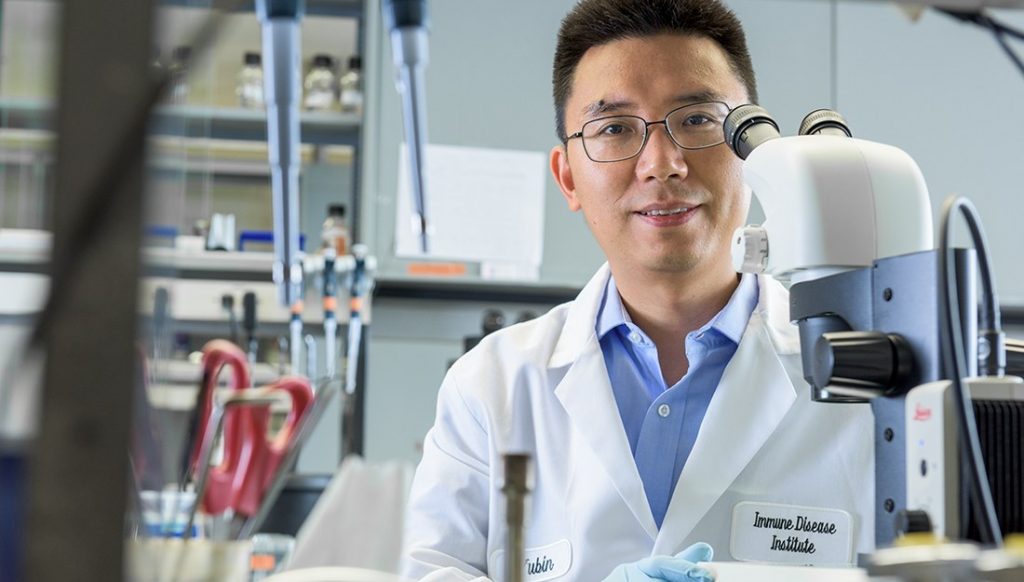Breast cancer: Discovery may help stop cells from migrating inside body

The recent discovery of a protein called TRIM59 may help scientists find a way to stop the migration of breast cancer cells before it starts, according newly published research from the Texas A&M Institute of Biosciences and Technology.
Published in the journal PLoS Biology, the work was led by Yubin Zhou, associate professor.
Cancer cells change their form and structure and adopt different migration patterns to metastasize and deprive the human body of the nutrients it needs for survival. Once cancer cells spread, they are extremely difficult to control. The disease may be put into remission, but can’t generally be cured.
Breast cancer, although not the deadliest, is the most common type of cancer in the United States in 2018. The protein TRIM59 is key to the “migration mode” of breast cancer, promoting its survival and metastasis.
“By combining the Cancer Genome Atlas data and cancer patient samples, we found that TRIM59 is often abnormally upregulated in metastatic breast cancer patients, a feature that is correlated with a poor patient survival,” Zhou said.
The bioinformatic and clinical analyses were performed through collaboration with Leng Han, a bioinformatician at the University of Texas Health Science Center at Houston.
The ability of the cell to change its for and structure is vital for cancer cell movement and metastasis. Cancer cells have at least three ways of moving through the body, depending on the surrounding environment and speed of migration.
A group of proteins called tripartite motif (TRIM) family play crucial roles in regulating the stability of critical proteins involved in cell migration. Therefore, the study of TRIM proteins in cancer mobility and metastasis could be a key to stopping cancer cell metastasis.
The researchers further found that TRIM59 directly interacts with PDCD10, a key modulator of a type of signaling that controls cell morphology and cancer cell metastasis. TRIM59 blocks its degradation through autophagy. In addition, when there is a mutation in the gene that produces PDCD10, it causes the devastating familial cerebral cavernous malformations disease.
These studies were supported by grants from the National Institutes of Health, the Cancer Prevention and Research Institute of Texas, the American Cancer Society and the Welch Foundation.

